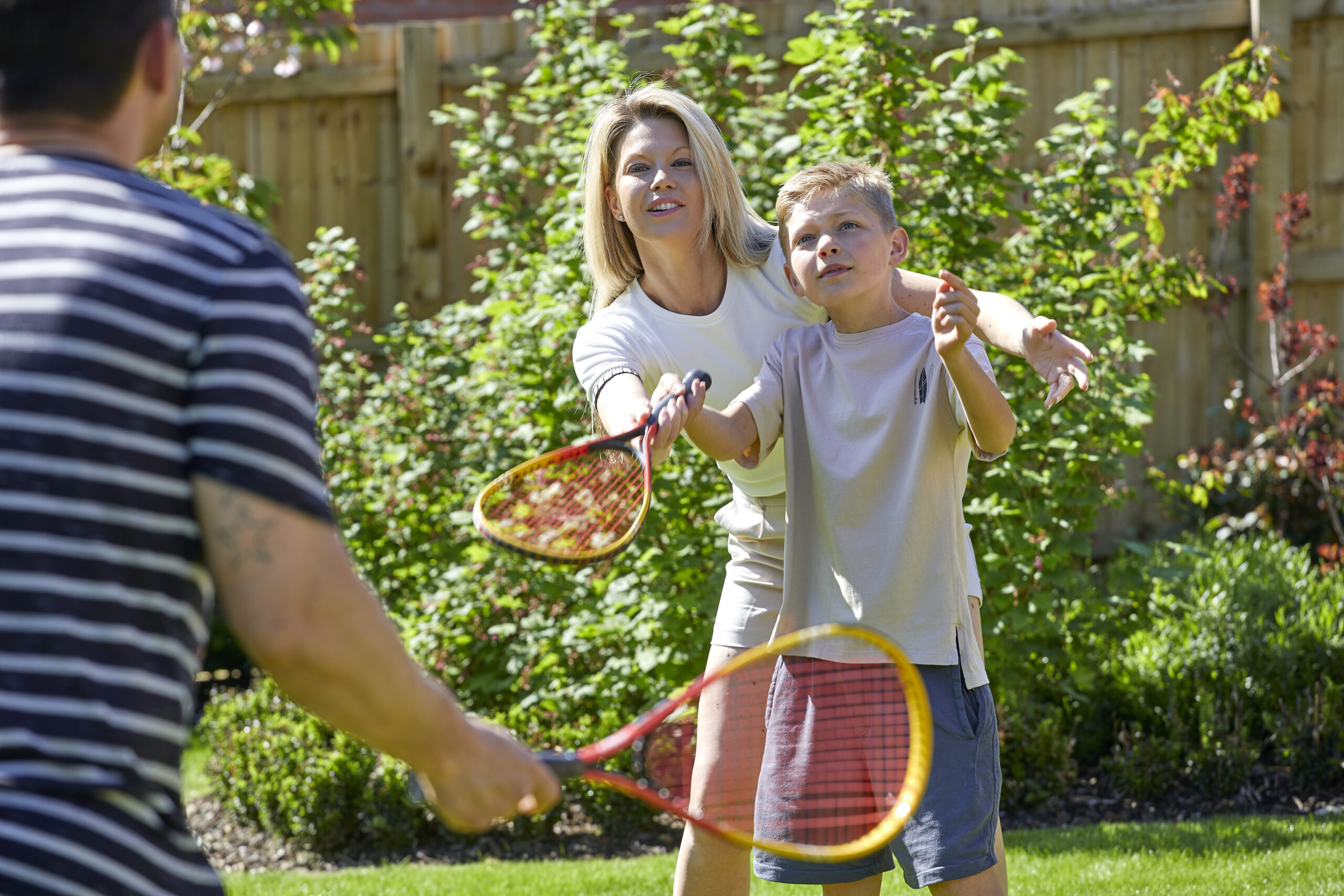It’s Wimbledon time and a chance to marvel at the world’s top players and the beautifully manicured lawns they compete on. So much so, that you may even feel inspired to emulate the look in your own garden.
A well-maintained lawn provides the perfect canvas for summertime – a place to relax, socialise and, of course, enjoy a spot of tennis!
However, getting your grass Wimbledon-ready requires careful preparation and maintenance. That’s why we’ve come up with our top tips for maintaining grass to help you achieve a championship-worthy lawn.
Mow regularly
When thinking about how to care for grass, regular mowing encourages it to grow more thickly, as well as improving the overall look.
Between March and October, mow your lawn weekly or fortnightly, depending on growth. During dry periods you won’t need to mow as often. Don’t mow in winter unless the grass is still growing. In which case, do so on a high-cut setting and never if the ground is soft, wet or frozen.
Longer grass protects the soil from the sun, helping to reduce water evaporation and maintain healthy roots, so it’s essential not to cut your grass too short. The Royal Horticultural Society recommends keeping grass between ½ and 1 inch in the summer and up to 1 ½ inches in the spring and autumn. Most mowers have an adjustment that allow you to select the cutting height.
Do a stint on border patrol
Crisp, clean edges help to create a neat-looking lawn and showcase borders to their full potential. To stop grass edging into your borders, cut a few inches all around your lawn with a flat-bladed spade or half-moon edging iron.
Keep on top of it by trimming any long grass at the edges that your mower misses. A pair of long-handled shears are just the job for this.
Feed your lawn
To achieve that lush carpet look, you may need to consider additional help in the form of fertiliser. Lawn feed helps grass to develop deeper roots and grow thicker and greener, which also helps to keep weeds at bay.
Spring is the best time to apply fertiliser, although it can be done up until August. Apply evenly over your lawn in cool temperatures, preferably when rain is expected, otherwise you’ll need to water it lightly afterwards.
Grass clippings can also help retain moisture in the soil and return valuable nutrients. Mulching mowers are specifically designed to do this. Alternatively, you can scatter clippings back over the grass once you’ve finished mowing. Short, dry clippings are key here – don’t do it if the grass is long and wet.
Sow your seeds
The rigours of winter and summer can take their toll on our lawns. Bare patches of grass not only look unsightly but are more likely to attract weeds. Spring and early autumn are ideal times to resow as the soil will be moist and warm.
Make sure you choose a grass seed suitable for your growing conditions and how much your lawn is used.
Remove any weeds by hand, and then work some compost into the soil. Scatter the grass seed evenly over, cover with fleece to protect from birds and then lightly water.
Get tough on weeds
Although some people may prefer the look and biodiversity of a wildflower garden, if you’re after the neat aesthetic of a Wimbledon lawn, tackling weeds requires some hands-on time.
Feeding and scarifying your lawn will encourage strong grass growth and make it harder for weeds to take root.
Remove weeds such as dandelions and daisies by hand. If weeds have become established, then you may need to use a lawn weedkiller. Make sure you choose the correct product for the type of weed in your garden, as some products are ineffective on particular weeds.
Keep an eye on dogs
How to care for grass when you’re a dog owner requires an extra level of attention. Dog urine is high in nitrogen, which although an essential nutrient, in concentrated quantities can burn grass, as those tell-tale brown patches illustrate.
One way to prevent this is to keep your grass moist. This will dilute the nitrogen in the urine and prevent it from damaging the grass. During dry spells you may need to follow your dog out and pour water on the spot they’ve urinated on.
Raising the blade height will also help to protect the grass and improve root depth, making your grass more resilient.
Another idea is to create a small gravel area and train your dog to use it. Show your dog where to go and reward them when they successfully complete their mission!
If you have found these tips for maintaining grass helpful, why not head back to our Peter Ward Homes article hub for more ideas and advice.




